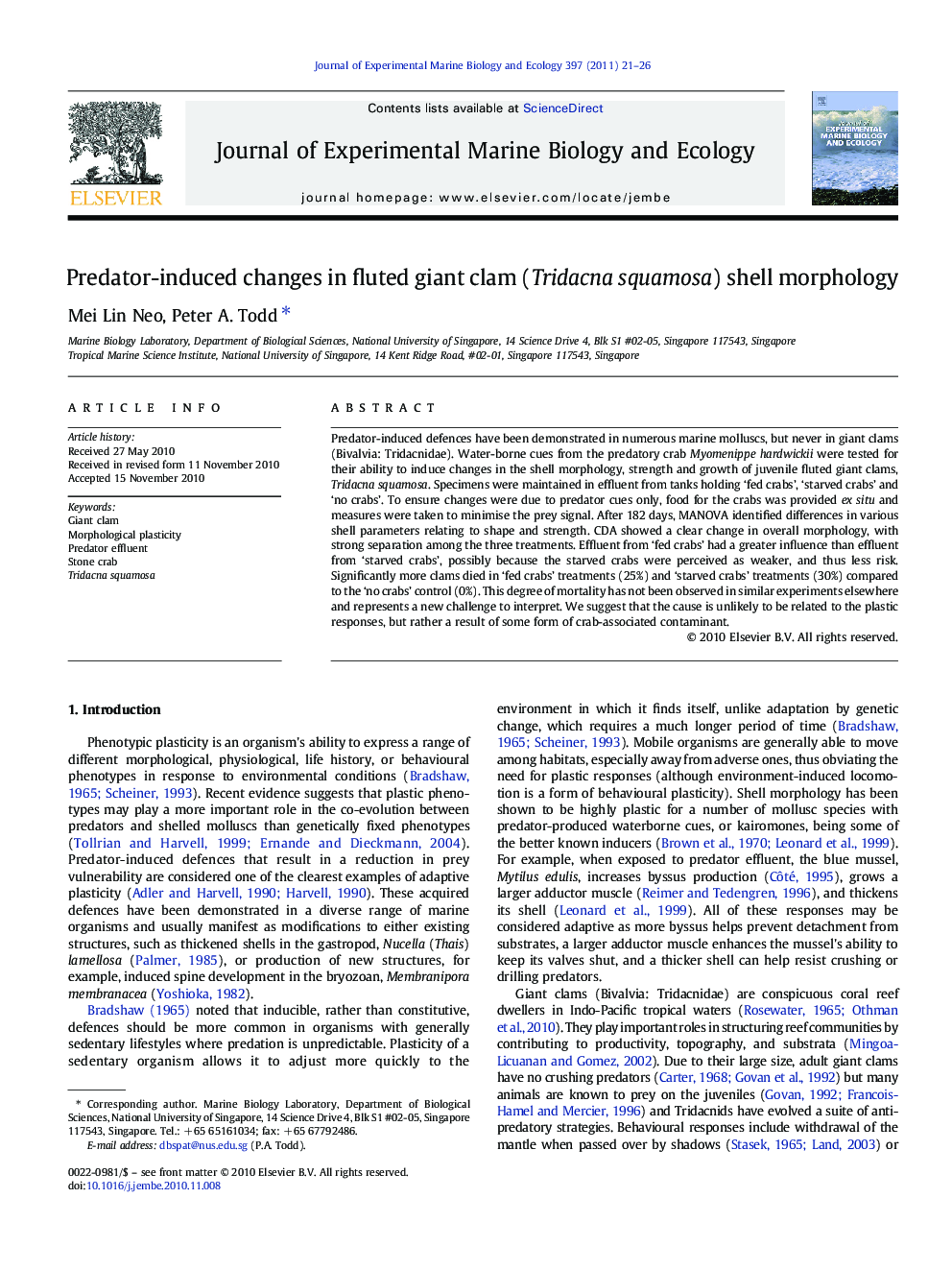| Article ID | Journal | Published Year | Pages | File Type |
|---|---|---|---|---|
| 4396425 | Journal of Experimental Marine Biology and Ecology | 2011 | 6 Pages |
Predator-induced defences have been demonstrated in numerous marine molluscs, but never in giant clams (Bivalvia: Tridacnidae). Water-borne cues from the predatory crab Myomenippe hardwickii were tested for their ability to induce changes in the shell morphology, strength and growth of juvenile fluted giant clams, Tridacna squamosa. Specimens were maintained in effluent from tanks holding ‘fed crabs’, ‘starved crabs’ and ‘no crabs’. To ensure changes were due to predator cues only, food for the crabs was provided ex situ and measures were taken to minimise the prey signal. After 182 days, MANOVA identified differences in various shell parameters relating to shape and strength. CDA showed a clear change in overall morphology, with strong separation among the three treatments. Effluent from ‘fed crabs’ had a greater influence than effluent from ‘starved crabs’, possibly because the starved crabs were perceived as weaker, and thus less risk. Significantly more clams died in ‘fed crabs’ treatments (25%) and ‘starved crabs’ treatments (30%) compared to the ‘no crabs’ control (0%). This degree of mortality has not been observed in similar experiments elsewhere and represents a new challenge to interpret. We suggest that the cause is unlikely to be related to the plastic responses, but rather a result of some form of crab-associated contaminant.
Research Highlights►Predatory crabs induced morphological changes in juvenile fluted giant clams ►Fed crabs induced more changes than starved crabs ►Shells of giant clams exposed to effluent from fed crabs became stronger ►Mortality was significantly higher in giant clams exposed to crab effluents
